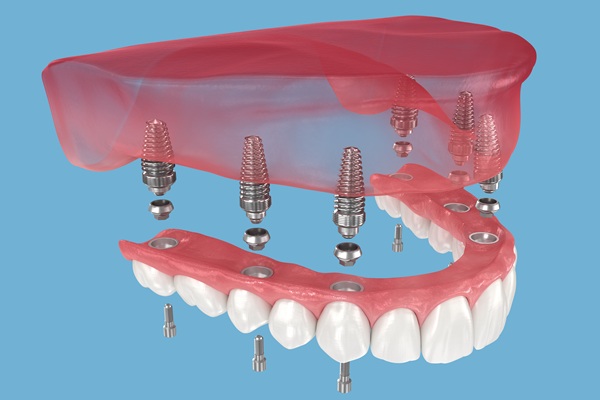How Does a Dental Crown Protect Your Tooth?

A dental crown can be used to fix a wide range of dental issues. Also called caps, these are tooth-like shells that are used to encase an entire tooth. It serves multiple functions: protecting the tooth from further decay and restoring its appearance.
Issues that crowns are often used to fix:
- Chipped, broken or cracked teeth
- Badly discolored teeth
- Severely decayed teeth
- Infected teeth
- Short teeth
- Gaps between teeth
How a dental crown protects a tooth
Here are ways that a crown protects the wearer's tooth from further damage:
1. It keeps away things that can damage the tooth
A dental crown protects teeth by keeping them safe from all the irritants in the mouth. Saliva, bacteria, food particles and acids are responsible for most of the dental issues people develop. Since the crown fully encases the tooth, these substances cannot reach the affected tooth to cause more damage.
For example, acids in the mouth are responsible for the vast majority of tooth decay. Some of these acids get into the mouth via the things a person eats, while others are produced by oral bacteria. These acids eat away at the protective outer layer of tooth (enamel), leaving the more sensitive parts of a tooth exposed.
2. It reinforces the tooth and protects it from bite forces
A crown also protects one's teeth from the forces involved in chewing. This is particularly important if the tooth has already been damaged. A crown restores the structural integrity and function of the tooth, allowing the patient to chew and speak with the damaged tooth as they have always done.
3. It holds the tooth together
When a tooth is protected with a cap, any fragmented parts of the tooth are held in place by the crown. This prevents the tooth from breaking into small pieces over time. It makes dental crowns an effective way to fix teeth that have fragmented into multiple pieces.
What to expect when getting a crown
There is not much to getting a dental crown. It starts with an evaluation, during which the dentist examines the patient and their oral issues. If the dentist determines a crown is the best solution, the patient's tooth will be prepared. This might involve removing a portion of enamel to make sure the crown holds tightly onto the remainder of the tooth.
An impression of the patient's mouth is taken, and this is sent to a dental lab that makes crowns. It takes about two weeks for the prosthetic to be ready. The dentist will usually fit the patient with a temporary crown and send them on their way.
Once the crown is ready, the patient is called back for an appointment, during which the temporary crown is taken out and the permanent one installed.
Need a crown?
Stop by our Long Beach office if you are dealing with a dental problem that requires the use of a crown.
Request an appointment here: http://lbfamilydental.com or call Leila Zamiri DDS at (562) 453-1214 for an appointment in our Long Beach office.
Check out what others are saying about our services on Yelp: Read our Yelp reviews.
Recent Posts
An immediate visit to an emergency dentist becomes necessary when severe tooth pain or infection disrupts your comfort and overall quality of life. This dental professional provides immediate evaluation and relief, particularly when a root canal is required to preserve a damaged or infected tooth. Root canal treatment from an emergency dentist can help alleviate…
Thinking about choosing implant-supported dentures to replace your missing teeth? This type of denture offers many benefits, which is why this denture choice has become so popular. However, properly caring for dentures supported by implants is necessary so they will last for many years.While there are many different types of denture choices to choose from,…
Choosing the right dental office is essential for maintaining good oral health and ensuring a positive dental experience. When visiting a new dental office, it is important to ask the right questions to ensure the practice meets your specific needs and expectations. Whether you are new to the area or simply seeking a change, asking…
Traditional braces are one of the most effective orthodontic solutions for straightening teeth and correcting bite issues. Many individuals are surprised to learn that receiving traditional braces from a general dentist can be a convenient and effective way to improve their smile. General dentists with additional training in orthodontics can provide comprehensive care, guiding patients…


